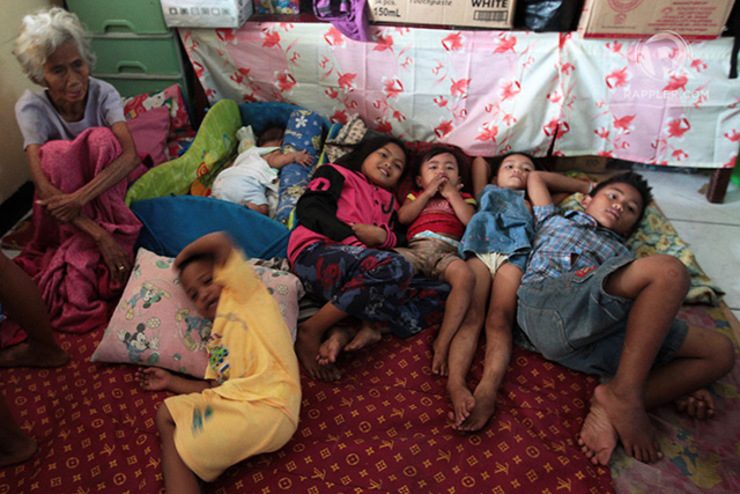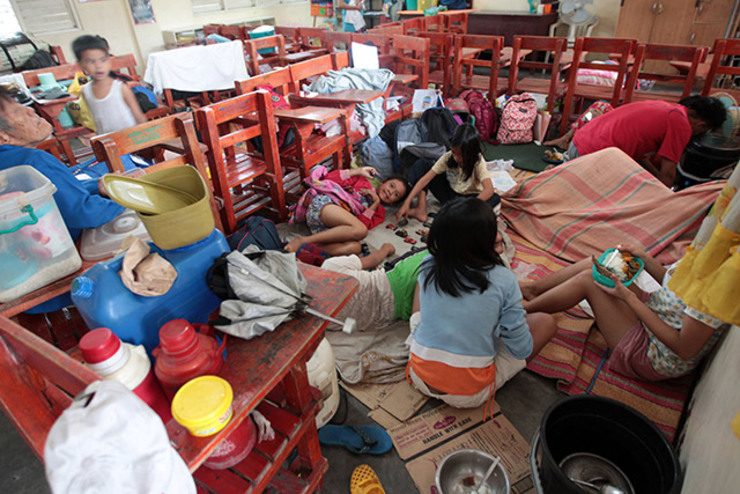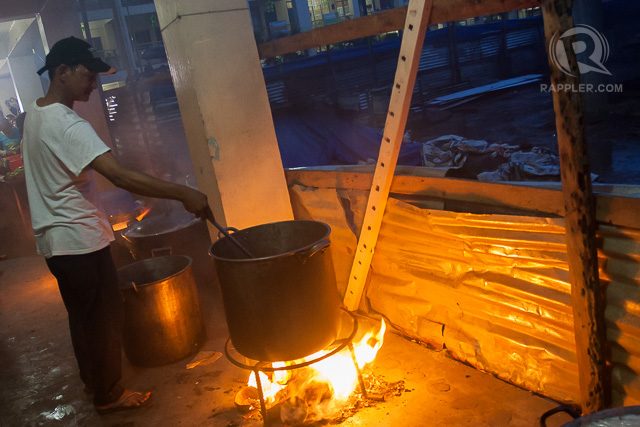SUMMARY
This is AI generated summarization, which may have errors. For context, always refer to the full article.

MANILA, Philippines – One million Filipinos – roughly one percent of the entire country’s population – in the path of Typhoon Ruby (Hagupit) were preemptively evacuated before the fickle typhoon made its 4 landfalls.
The United Nations (UN) Office for Disaster Reduction called it “one of the largest peacetime evacuations in Philippine history.” The international aid organization compared it to the evacuation conducted before the 2013 cyclone Phailin hit India, a country of 1.2 billion people.
“Our advocacy on the importance of evacuation is finally being supported now by our communities,” said Romina Marasigan, spokesperson of the Office of Civil Defense. She said most of the people volunteered to evacuate and no longer waited for local government units to knock on their doors.
“This is preemptive, take note. Hindi ito ‘yung bumagyo na at saka lang sila nag-evacuate,” Marasigan added. (This isn’t a case of people evacuating only after the storm had come.)
Government statistics show 1,034,464 persons were being served in evacuation centers as of 6 pm on Monday, December 8, shortly before Typhoon Ruby was downgraded into a tropical storm and made its 4th and final landfall in Batangas. (Ruby is expected to leave the Philippine Area of Responsibility on Wednesday, December 10.)
This number is incomplete because thousands already returned to their homes Monday morning in several parts of Eastern Visayas, while many Metro Manila residents were still expected to evacuate.

Larger evacuation than Yolanda
The Ruby evacuation, however, is definitely larger and wider than what the Philippines mobilized before Typhoon Yolanda (Haiyan), the world’s strongest recorded typhoon to make landfall.
Nearly a million people, 902,321 to be exact, were already evacuated as soon as Ruby made landfall in Dolores town in Eastern Samar Saturday evening, December 8, based on a situation report released by the National Disaster Risk Reduction and Management Council (NDRRMC).
In comparison, only 125,604 people were evacuated after Typhoon Yolanda made its first landfall in Guiuan province, also in Eastern Samar, on November 8, 2013. Yolanda made 5 more landfalls after Guiuan.
An NDRRMC report issued a month after Typhoon Yolanda shows nearly 4 million were displaced and only about 100,000 were housed in evacuation centers.
Voluntary evacuation
Originally projected to be a super typhoon, Ruby’s 600-kilometer diameter affected wide areas in the country. It eventually weakened but stayed too long. (READ: Ruby: ‘Longest-staying typhoon’)
Flooding was reported across its path and its winds caused storm surges that flattened coastal houses and felled electric posts and trees. The death toll from Ruby stood at 21 nationwide as of Monday, according to the Philippine Red Cross.

In Eastern Visayas, Ruby was not as devastating as the world feared it was going to be. It’s nowhere near Typhoon Yolanda, which flattened communities and killed more than 6,000 in the same path.
A US team that arrived here to survey the impact of Typhoon Ruby found “no major damage,” said Major Emmanuel Garcia, commander of the Camp Aguinaldo-based 7th Civil Relations Group (CRG), the unit tasked to link the troops with the Office of Civil Defense.
“US plane U-28 survey indicate light casualties….No major damage of structures, most trees bending but not down,” Garcia said, quoting the US survey.
Its impact outside the Visayas has yet to be assessed, however. Ruby is feared to cause huge waves in Manila Bay, where the typhoon’s eye would come close late evening on Monday.
Marasigan acknowledged that evacuation is expensive but necessary. “The President has always stressed that every Filipino’s life is priceless,” she said.
In the case of Ruby, the government showed it can deploy massive resources and personnel to prepare for a disaster, the kind that should have been done before Super Typhoon Yolanda.
In a country that faces an average of 20 typhoons every year, no lesson is ever too late. – Rappler.com
Add a comment
How does this make you feel?
There are no comments yet. Add your comment to start the conversation.